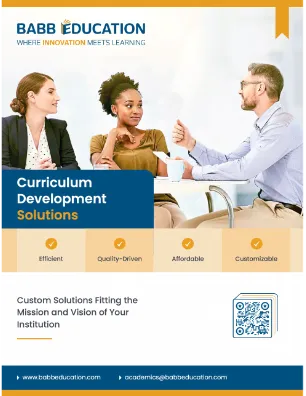As the Director of eLearning, for Babb Education, I often talk with administrators as they weigh whether they should end their OPM agreement. Ending an OPM partnership is complex. In this blog, we outline several areas administrators should consider before severing the agreement, including contract obligations, financial details, marketing strategies, course content and data ownership rights, and exit plans.
Contractual Obligation Considerations
When ending an OPM partnership, institutions must carefully review their contractual obligations to avoid financial and operational pitfalls. Key considerations include termination clauses, required notice periods, and any penalties or fees associated with early exit. Many OPM agreements involve revenue-sharing models, so universities should determine whether they are obligated to continue payments beyond the contract term.
Financial Considerations
An essential first-step for administrators considering divorcing their OPM is to conduct a thorough financial analysis to determine the profitability of insourcing compared to continuing with their OPM. A critical financial factor is the potential impact on enrollment and tuition revenue. Many OPMs are responsible for student acquisition and retention, and without a solid replacement strategy, institutions may see a decline in enrollment, leading to revenue shortfalls. Schools must analyze their current enrollment trends and revenue streams to gauge how much of their financial success is tied to the OPM’s efforts. If the OPM has been driving a significant portion of new student enrollments, the institution will need to invest in alternative marketing and recruitment strategies to sustain growth. This could involve reallocating tuition revenue into building an internal enrollment team or working with third-party vendors on a pay-for-performance basis. Conducting a thorough cost-benefit analysis will help institutions determine whether bringing services in-house or finding a new partner will ultimately yield a stronger long-term return on investment.
Marketing Considerations
When transitioning away from an OPM, institutions must carefully evaluate their marketing efforts to ensure continued enrollment growth and brand visibility. Many OPMs handle digital advertising, SEO, content marketing, and lead generation, so colleges and universities will need to determine how to replicate or improve these strategies in-house or with new partners. Key considerations include budget allocation for paid advertising, the development of strong content and SEO strategy, and the capacity to manage student inquiries effectively. Institutions should also assess their marketing technology stack, including customer relationship management (CRM) platforms and automation tools, to ensure seamless lead tracking and nurturing. Additionally, universities must maintain their competitive edge in a crowded online education market by refining their messaging, targeting the right student demographics, and continuously optimizing their marketing campaigns based on performance analytics. Without a strong marketing transition plan, institutions risk losing prospective students and experiencing enrollment declines.
Considerations about Course Content and Data Ownership
Ensuring ownership and access to course content, learning materials, and data is essential when ending an OPM partnership. Some contracts grant the OPM partial or full ownership of instructional materials, meaning universities may need to negotiate content buyout terms or seek permission to continue using existing courses. If courses are hosted on a proprietary learning management system (LMS), institutions should confirm whether content can be migrated or if redevelopment is necessary. Data ownership is another critical consideration, as OPMs often control enrollment records, marketing analytics, and retention metrics. Without access to this data, institutions risk losing valuable insights into student engagement and recruitment effectiveness, which could hinder future program growth. Schools should also assess how their LMS and customer relationship management (CRM) integrations will be affected, particularly if the OPM managed these platforms. Additionally, universities must plan for continuity in student support services—such as academic advising and technical support—must be ensured to prevent disruptions in the student experience. Developing a comprehensive transition plan addressing course content and data ownership can help institutions maintain program stability and student satisfaction throughout the separation process.
Negotiating an Exit Strategy
Negotiating an exit strategy is another critical step in ensuring a smooth transition into a post OPM world. Institutions should work with legal counsel to negotiate data transfer agreements, continued access to learning materials if needed, and provisions for supporting students during the transition period. Effective communication with stakeholders is equally important. Faculty should be informed about any changes to course ownership, LMS access, and teaching responsibilities, while students must receive clear guidance on how the transition will affect their learning experience. Administrative leaders also need to be involved in securing the necessary budget, staffing, and marketing resources for the post-OPM phase. Finally, after the transition is complete, universities should closely monitor key performance metrics such as enrollment trends, student retention and satisfaction rates, and marketing return on investment (ROI). Tracking these indicators will allow institutions to refine their online education strategy, address any challenges that arise, and ensure long-term success in managing their programs independently.
Successfully ending an Online Program Management (OPM) partnership requires careful preparation and a structured transition plan. The first step is conducting a thorough internal audit to assess the institution’s readiness to take over key functions such as marketing, enrollment, and student support. Universities should identify gaps in technology, infrastructure, and staffing while also evaluating budget requirements for bringing operations in-house or securing new partners. Once the internal audit is complete, developing a step-by-step transition plan is essential. This plan should include a clear timeline for terminating the OPM agreement, detailed roles and responsibilities for faculty, administrators, and IT teams, and strategies for maintaining enrollment and student support throughout the transition. Without a well-defined roadmap, institutions risk disruptions in student services and operational inefficiencies.
If your university is considering ending its OPM partnership, start by asking the right questions and developing a transition strategy that supports long-term online program success. Contact Babb Education today to learn more about we can work with your institution to fill in the gaps after you breakup with your OPM!



